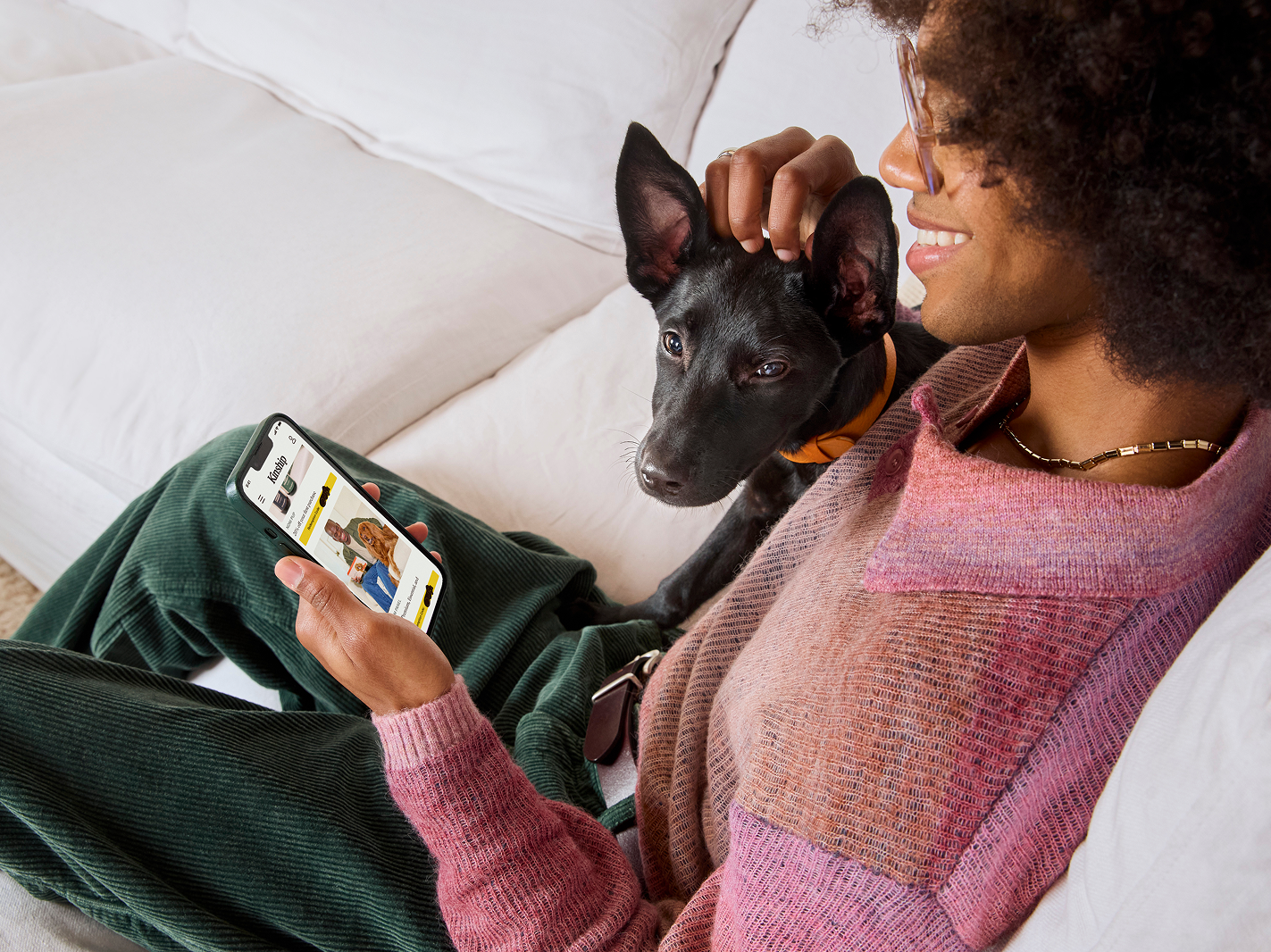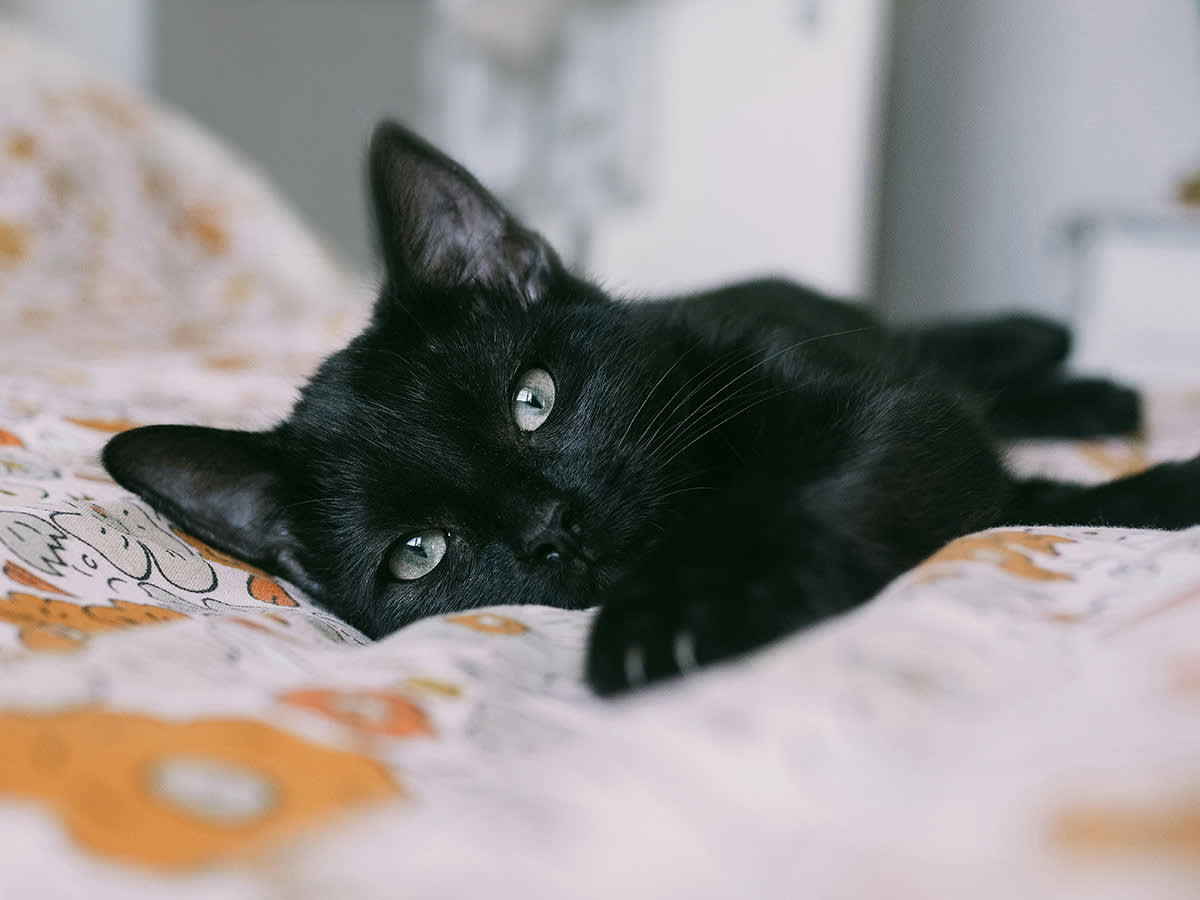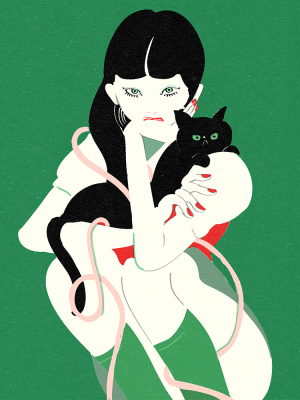Here’s Why We Associate Cats With Witches
Medieval witch hunts created superstitions that still haunt cats today

Share Article
Black cats crossing your path might seem like harmless superstition today, but centuries ago, owning a cat could literally get you killed. Whether it’s Salem from Sabrina the Teenage Witch or Thackery Binx from Hocus Pocus, in popular culture pussycats and pointy hats seem to go hand-in-hand. But just how did cats become inextricably linked to our storybook witches – and why are the consequences still affecting cats in shelters today?
The dark origins: when cats became ‘evil’
Cats first became associated with witchcraft and even the devil during the witch trials of the 16th and 17th centuries. Despite Hollywood’s eager adoption of the cat-and-witch combo as light entertainment, the idea of a witch and her familiar is particular to English witchcraft. In a nod to those thought to be employing a familiar, by 1604, English law purposely made the invocation or conjuration of an evil spirit punishable by death, including the feeding and rewarding of said evil spirit.

Get (totally free) deals for food, treats, accessories, tech and way more pet parenting must-haves.
The 17th century English Puritan Cleric John Gaule, who is now remembered for his partially sceptical views on witchcraft, wryly pointed out that: “Every old woman… a dog or cat by her side, is not only suspect but pronounced for a witch.”
And while dogs seem to have shaken off the spooky associations, cats haven’t fared as well.
What we really know about historical witches
Sorry to burst your bubble Ariana and Cynthia, a lot of what we think we know about the witches of the past is wrong.
Australian historian and witchcraft expert Diane Purkissopens in new tab, a professor of English Literature at Oxford University and a fellow of Keble College, has spent years debunking witch trial myths. This includes the idea that witches were burned at the stake (in most English-speaking places, they were hanged because witchcraft was an actual crime) and that the Spanish Inquisition and the Catholic Church instigated the witch trials (all major western Christian denominations persecuted witches, while in reality the Inquisition executed only two witches in total).
But Purkiss can explain why, when we think of a witch, we expect her (and it is mostly women we are talking about when we think of England) to also have a ‘familiar’, a small animal (or supernatural entity) kept as an attendant, which was believed to assist or protect the witch.
The psychology behind the cat-witch connection
“Historically, legal clerks were looking for evidence of a pact with a demon to explain how a woman considered a witch was able to source her power, they believed it must come from entities summoned to her side, rather than the women herself,” explains Purkiss.
This is because much of what was considered to qualify a woman as a witch was also (rather conveniently for a patriarchal society) anything other than a fertile woman ready to bear children, or more children, for her husband. A woman suspected of witchcraft was likely to be old, childless and living alone – or in another non-conformist way, perhaps with a pet, a pet that was obviously in fact a demon, ready to do her bidding. A non-witch would be young and fertile and tending to her home, her husband and their children.
Why cats specifically?
We often expect a witches’ familiar to be feline. But why cats over other animals?
Purkiss explains that “many visual representations of devils at the time depict them in animal terms, often with fur”.
“And we need to understand animals and their place in culture, cats could be considered wild and savage, the cat is a carnivorous predator, mixing domestication and hunting, and they are nocturnal, which was also thought to be connected to diabolism.”
“Because tamed cats behaved more kitten-like than they would have in the wild, they effectively occupied a place in the household that could have been compared to that of a child, dependent on the woman carer for food,” says Purkiss.
But since society wanted women to only be defined by the gender norms of reproductivity, and a woman caring for a pet rather than a child went against those norms, she was an oddity.
Purkiss adds, “the physical joy of her relationship with her familiar acted as a red flag, a warning that the women who harbour and cherish small animals such as a cat have already strayed from their ‘biological destiny’.”
A deadly case study: the Essex witch trials
These abstract fears became terrifyingly real in places like Essex, where specific cases show how deadly these black cat superstitions could be.
One of the most notorious periods of witchcraft persecution in British history was the Essex Witch Trials, including the trials and executions of the ’Chelmsford witches’ during the 16th and 17th centuries. Over 100 individuals were tried and executed as witches, including one of the first woman executed for witchcraft in England, widow Agnes Waterhouse, who was tried in Chelmsford in 1566.
A cat named ‘Sathan’ (or Satan), given to Agnes by her sister Elizabeth Francis, played a central role in the trials. Agnes confessed to using the cat, which she said was a familiar and a demon in disguise, to carry out all the things she was accused of, including the killing her husband and the death of her unborn child.
Elizabeth Francis and Agnes’ daughter, Joan, were accused of witchcraft alongside her. It’s likely that Agnes confessed under duress or in an attempt to spare her daughter from the death sentence (which she was, Elizabeth Francis was also executed).
Interestingly, Sathan was a white spotted cat, and not the black cat we might associate with a witch today.
The modern legacy: why cats still suffer
Black cats however continue to be the main image associated with witchcraft, Halloween and general bad luck (except for in Japan where they are thought of as bringers of good fortune, especially for businesses). And that means they are still the least likely to be adopted.
As well as their historical association with all things devilish, the very modern obsession with social media prevents cats with dark fur being offered a home, because they simply don’t show up well in photos posted to platforms such as Instagram. In a busy animal rescue, a puss with a lighter coat colour is far more likely to stand out than a black cat, which can blend into the background.
The political echoes
The general distrust of women and their cats still pervades in certain circles today, particularly those that apparently want to see the idea of a traditional family flourish. In 2021, JD Vanceopens in new tab called Democratic politicians a “bunch of childless cat ladies with miserable lives”.
Much like the witch hunters of early modern Europe, he justified the remark by saying he was concerned that some leading politicians in his rival political party did not have children, including Kamala Harris, and that meant they were anti-family and anti-children.
Breaking the curse
The witch trials of centuries past created a superstition so powerful that it continues to affect real cats today. From medieval courtrooms to modern animal shelters, the association between cats and dark magic has proven remarkably persistent. Understanding this history helps us recognise these biases for what they are: unfounded fears that have no place in how we treat our feline companions.
It seems even centuries later, cats are still waiting for society to give them a break from the deadly legacy of witch hunt hysteria.

Vanessa Holburn
Vanessa Holburn is a journalist whose work has featured in The Telegraph, The Express and The Mirror, as well as Wunderdog, Dogs Today, Bella and Fabulous magazines. She is also the author of How To Pick A Puppyopens in new tab and was part of the successful #LucysLaw campaignopens in new tab that banned puppies from being sold in pet shops. She’s dog mum to Ziggy, a sofa-loving rescued Lurcher who does not like piña coladas and getting caught in the rain.




